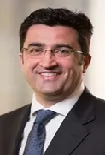The Intellectual Property Laws Amendment (Raising the Bar) Act 2012 (the RTB Act) commenced 3 years ago, and with the passage of the legislation came a number of important changes to the Patents Act 1990 (Cth) (the Act), in particular to increase the thresholds of 'disclosure' and 'support' required in a patent specification. Australian attorneys will undoubtedly have been drafting specifications to these higher standards for many years, even before the passage of the RTB Act. In view of the first opposition decision to deal with these more stringent requirements1, this article may serve as a timely reminder on how these relatively new laws affect how specifications are drafted in order to comply with the higher thresholds of disclosure and support.
The law prior to, and post Raising the Bar
It is worth briefly reviewing the old laws before discussing the new laws on disclosure and support in order to provide some context to the ensuing discussion.
Sufficiency and fair basis
Prior to the RTB Act, Australian patent law required that a patent
specification must describe the invention fully
('sufficiency' of disclosure), including the best method of
performing the invention known to the applicant. The test was
whether the specification enabled a person skilled in the art
(PSA) to produce something within each claim
without new inventions or additions, or prolonged study of matters
which initially presented difficulty.
The sufficiency test is quite generous to the patentee, in that there was no requirement that a claim had to be enabled over its full scope, nor for every possible application of the invention to work, or to have been demonstrated to work. And even if multiple examples or embodiments of the invention were claimed, enabling only one was sufficient. The result is that patentees could gain broad protection over something which they had only disclosed in narrow terms, and that consequently the monopoly extended beyond the knowledge that the patentee has shared with the public.
Australian patent law also required that the claims must be 'fairly based' on the matter described in the specification. The fair basis test is merely whether there is consistency of the claims with the invention described, although there are several sub-tests which give the test some teeth (a 'real and reasonably clear disclosure' of the claimed invention, and whether the claims 'travel beyond the subject matter of the invention described'). The choice of sub-test for fair basis was often critical for determining whether or not fair basis was found.
The RTB reforms
The sufficiency requirement was amended by the RTB reforms to
require that a complete specification must 'disclose the
invention in a manner which is clear enough and complete
enough' for the invention to be performed by a PSA
(disclosure). Further, the Patents Act was amended from a
requirement that the claims must be 'fairly based' on the
matter described in the specification, to one whereby the claim
must be 'supported by the matter disclosed' in the
specification (support). Importantly, when assessing entitlement to
a priority claim, the level of support provided by a provisional
specification or priority application is determined using an
identical test.
The requirements of disclosure and
support
The disclosure requirement can be summarised simply: "Can the
skilled person readily perform the invention over the whole area
claimed without undue burden and without needing inventive
skill?"2. The test which follows is whether the
specification enables the PSA to perform the claimed invention to
meet this requirement.
The support requirement is whether the scope of the claims corresponds to the "technical contribution to the art"3. The distinction between the technical contribution to the art and the inventive concept was explained by Lord Walker in Generics4 who clarified that the inventive concept is concerned with the identification of the core, kernel or essence of the invention which entitles the inventor's achievement to be called inventive, whereas the technical contribution to the art is concerned with the evaluation of its inventive concept.
The law on support, which has been 'borrowed' from other jurisdictions5, describes that the technical contribution to the art is either a principle of general application (a general principle that can be practically applied to make a class of products or to work a process, and where it is reasonable to expect or predict that the claimed invention will work with anything that falls within the general term), or the discrete products/methods disclosed in the specification that cannot be made or worked by applying a general principle.
In relation to what constitutes an 'undue burden', it seems that 'routine matters' or ordinary methods of trial and error which involve no inventive step are acceptable, whereas it would be considered an undue burden if the PSA had to undertake prolonged research, enquiry or experiment, or take an inventive step in order to carry out the claimed invention. The financial burden may also be considered. Matters of undue burden should be considered in the context of the nature of the invention, the abilities of the PSA in which the invention has been made, and the common general knowledge (CGK) in the art.
In brief overview, both disclosure and support require that the patent specification provide sufficient information to enable the PSA to perform the invention to the full extent of the monopoly claimed without undue burden and without needing inventive skill. Support, however, carries the additional requirements that the claims cannot be broader than is justified by the extent of the disclosure and the technical contribution to the art.
Drafting a sufficiently enabled patent disclosure
It is still possible, post- RTB, that disclosure requirements may be satisfied by a single example of the invention. For example for a claim to a product that can only have one embodiment, e.g. a single chemical compound. Alternatively, a single example may be sufficient if the PSA can readily extend the teaching of the specification to produce the invention across the full width of the claims without undue burden or the need for further invention. However, and in a departure from the old law on sufficiency, what is more likely is that a number of alternative embodiments will be required, especially where the claims are broad. For example, where the claims include a number of discrete processes/products, each must be sufficiently disclosed and enabled, otherwise it would need to be shown that enablement of one provides enablement of the others.
Disclosure (and support) also impart more onerous enablement requirements for claims which are directed to synergism or alloys, where the exhibited properties are unpredictable and it would impose an undue burden if the PSA was required to test all possible combinations to determine those falling within the scope of the claims. Claims by result such as parametric claims, and reach through claims are also affected for similar reasoning. However, the level of enablement required for principle of general application will be less than that required for claims that are directed to discrete products/methods that cannot be made or worked by applying a general principle6.
The claims must be supported by the specification
The mere mention in the specification of features appearing in the claim will not necessarily be a sufficient support. "The word 'support' means more than that and requires the description to be the base which can fairly entitle the patentee to a monopoly of the width claimed."7
Generally speaking, a claim will not be supported if it is so broad that it encompasses any embodiment that the inventor has not enabled and/or which owes nothing to any principle which it discloses. Alternatively, a claim will not be supported if it claims every way of achieving a result when it enables only one way, and it is possible to envisage other ways of achieving that result which make no use of the invention.
An important point to be taken from the CSR decision is to carefully consider examples which tend to contradict the broader claims, or suggest that additional integers are essential to the functioning of the invention, as such examples may affect the ultimate scope of protection. Examples should be reviewed carefully to ensure they are consistent with the technical contribution to the art. Internal consistencies should also be resolved prior to filing, or should be carefully explained in the specification.
Conclusions
Ideally, a patent specification should be drafted to ensure that sufficient information is provided to:
- enable the whole width of the claimed invention to be performed by the PSA,
- without undue burden (no prolonged research, enquiry or experiment), or
- the need for further invention, and
- allowing for a reasonable amount of ordinary trial and error, and
- having regard to: the nature of the invention, the abilities of the PSA, and the CGK in the art.
In particular, the specification should provide clear guidance telling the PSA how to adjust each feature of the claimed invention so as to achieve with certitude the full combination of claimed properties.
A single example may be sufficient, but it is more likely that for broad claims the specification will need to give a number of alternative embodiments extending over the full scope of the claims. The required level of enabling disclosure will be less if the claims are directed to a principle of general application compared to claiming discrete methods/products, and the particular attention should be paid to: claims by result such as parametric claims, synergism, reach through claims, and claims to alloys. Generally speaking, the number of examples and level of detail required will depend on the area of technology and the particular invention.
It is preferable to draft claims which cover all obvious modifications, equivalents to, and uses of, that which has been described in the specification, and to draft broader claims when it is reasonable to expect or predict that all the variants covered by the claims have the properties or uses ascribed to them in the body of the specification. In doing so, the applicant should be quite clear which statements are made on the basis of experimental results, and which statements are predictive.
Attorneys should also take particular care with a priority filing, as it must meet the same disclosure requirements as the complete application. It is also preferable for information to be included in application at outset, rather than later, or attempting to rely on CGK. Issues in relation to sufficiency of disclosure and support may only come to light post grant, such as in opposition or invalidity proceedings, and may be difficult to remedy by amendment or limitation.
Footnotes
1CSR Building Products Limited v United States Gypsum Company [2015] APO 72 (the "CSR decision")
2 Novartis AG v Johnson & Johnson Medical Limited [2010] EWCA Civ 1039 at [74]
3 Fuel Oils/EXXON (T409/91) [1994] OJ EPO 653 (Exxon) at 659
4 Generics (UK) Ltd v H Lundbeck A/S [2009] UKHL 12 at [30]
5 see the Intellectual Property Laws Amendment (Raising the Bar) Bill 2011 Explanatory Memorandum: Item 9
6 Biogen v Medeva [1997] RPC 1 at 48
7 Schering Biotech Corp.'s Application [1993] RPC 249 by Aldous J at 252
The content of this article is intended to provide a general guide to the subject matter. Specialist advice should be sought about your specific circumstances.



